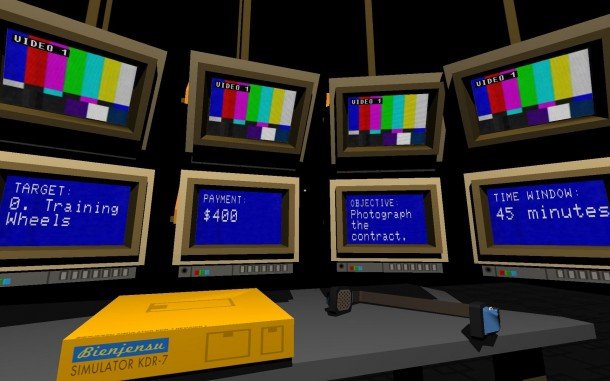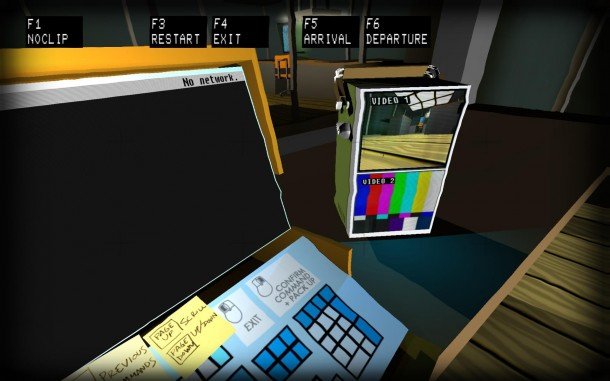Quadrilateral Cowboy - Brendon Chung's latest game takes things back to BASIC

This article originally appeared in issue 246 of PC Gamer UK.
They're called 'windows' for a reason. Those boxes on your computer, I mean. Interface design is driven by a need to give computing a physical form, to bury the abstraction of the command line under things we can see: the desktop, the recycle bin. Games are the logical end product of this trend – where else can you actually occupy a space generated by a computer?
Brendon Chung's latest game takes that idea and slams it into reverse. Quadrilateral Cowboy is a first-person heist game about reprogramming the world using an in-game command line, writing scripts to open doors, and shut down cameras and security lasers. It's a hacking minigame that tasks you with hacking the map itself.
QC is similar to Chung's other first-person games, Gravity Bone and 30 Flights of Loving. It has the same '60s kitsch: office spaces rendered in pink, orange and eggshell blue, but where those games were purely narrative experiences, there's a puzzle game emerging around Quadrilateral Cowboy's whirring 56K heart.
That heart is your 'deck', a laptop you can deploy anywhere and use to reprogram the obstacles that stand between you and your mission objective. One of your available programs grants control over grates, skylights, cameras and doors, and the scripting language to control these is driven by simple, memorable commands like “grate4.open(3)”. That final number is the number of seconds the grate should remain open; useful, when leaving a door open too long may trigger an alarm, and you'll be judged on how many alarms you activate.

Faced with a corridor full of cameras, you can't just write a script to switch them all off: you have to figure out the timing, write something that switches them off sequentially, then time your dash for the door to match the code you've just written. That idea alone is exciting, combining the tension and physical interactivity of the stealth action genre with the satisfaction of reaching inside a computer and tinkering with its working parts directly.
There's a strong sense that the solutions you create are your own, and an additional program even allows you to create batch files for later use. The toughest stage in the test build I played involved getting in and out of a target building in less than a minute: impossible without quite literally scripting your approach in advance.
The biggest gaming news, reviews and hardware deals
Keep up to date with the most important stories and the best deals, as picked by the PC Gamer team.
Then there are your other toys, such as a quadrupedal robot that you hook up to a set of monitors and control, remotely, using your deck. Placing the deck and monitors in an area overlooking the goal, you're effectively setting up an in-game workspace: a desktop, on a desktop. Then it hits you that these missions are taking place inside a virtual training environment inside the game itself. Then, what's left of your brain makes a break for the window.
Joining in 2011, Chris made his start with PC Gamer turning beautiful trees into magazines, first as a writer and later as deputy editor. Once PCG's reluctant MMO champion , his discovery of Dota 2 in 2012 led him to much darker, stranger places. In 2015, Chris became the editor of PC Gamer Pro, overseeing our online coverage of competitive gaming and esports. He left in 2017, and can be now found making games and recording the Crate & Crowbar podcast.


